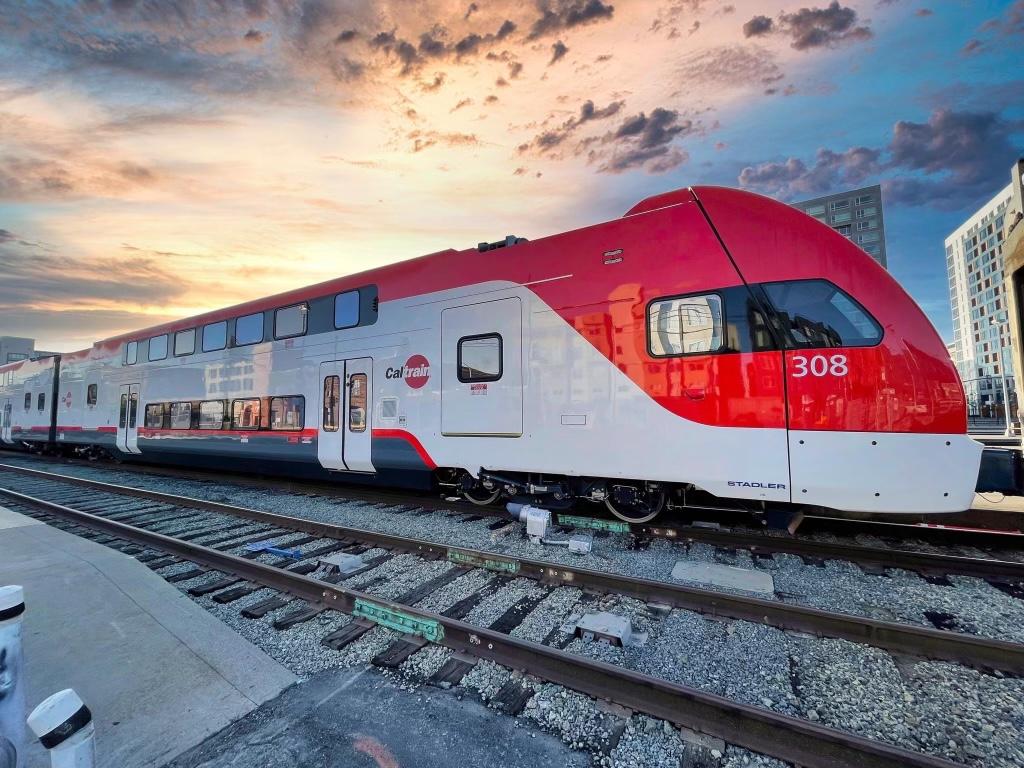Bay Watch – 2025 Transit Tracker

Bay Watch: A Weekly Look into the Bay Area Economy
May 21st, 2024
Bay Area transit agencies still struggling to recoup ridership
Transit ridership in the Bay Area was severely impacted by the COVID-19 pandemic and shift to remote work. While there have been several efforts underway to revitalize ridership across the region’s 27 different agencies, ridership has remained relatively stagnant over the last 12 months. Which begs the question: have we reached the peak of post-pandemic ridership? Is there any hope of getting more riders back on transit? In this week’s Bay Watch, we analyze ridership over the last year for the region’s key transit agencies to get a deeper understanding of the Bay Area’s transit ridership recovery.
CalTrain and BART ended the year with low levels of ridership, bringing in 28% and 38% of pre-pandemic weekday riders in December 2023, respectively. Contrastingly, toll tag data show 88% of pre-pandemic traffic volumes have returned on the Bay Bridge. Ridership on WETA’s 15 passenger ferries has fared better, having recovered 86% of pre-pandemic riders. Other transit agencies including VTA, AC Transit, MUNI, and Golden Gate Ferry have experienced at least a 50% ridership recovery as of December 2023.
Over the course of 2023, most agencies saw little change in average weekday ridership. The chart below shows average weekday ridership in absolute terms for WETA, Caltrain, VTA and BART. While some agencies saw minor surges in ridership, largely during the fall, most have remained relatively stagnant. BART averaged 166,422 riders per weekday during the final half of 2023, down 245,327 (or 61%) of riders from 2019’s average weekday ridership of 407,681. BART ridership peaked in October 2023 at 41% of its pre-pandemic ridership, while CalTrain’s recovery peaked in November 2022 at 30%.
How do things look by days of the week?
Unlike public transportation, car commuting across the Bay Area’s state-owned toll bridges has made a nearly full recovery. Our analysis reveals that that many people who are now commuting are choosing to drive alone or carpool, rather than take transit. In an analysis of morning commutes (6-10am) across the four most trafficked bridges in the region, the Bay Bridge demonstrated the highest midweek volumes (over 100% pre-pandemic traffic), while the San Mateo-Hayward bridge, which takes many commuters from the East Bay and beyond into tech campuses and startups scattered throughout the South Bay, has demonstrated some of the lowest midweek volumes given pre-pandemic levels, given the high share of remote work in the tech industry. Additionally, the most recent data provided by Kastle Systems 10-City Back to Work Barometer, indicates that the highest days for office occupancy are on Tuesdays, where the occupancy rate for the San Francisco and San Jose metro areas is 59% and 53%, respectively, which is lower than the 61% average of the top-10 peer metros.
These changes align closely with our return to work and transit survey, which we administer bi-monthly to roughly 200 employers throughout the region to inform transit agencies and policymakers. When asked what percentage they anticipate their workforce to come into the workplace six months from now, employers responded that around 50-60% will come in Tuesday through Thursday, while only 41% will come in Mondays, and 30% will come in Fridays.